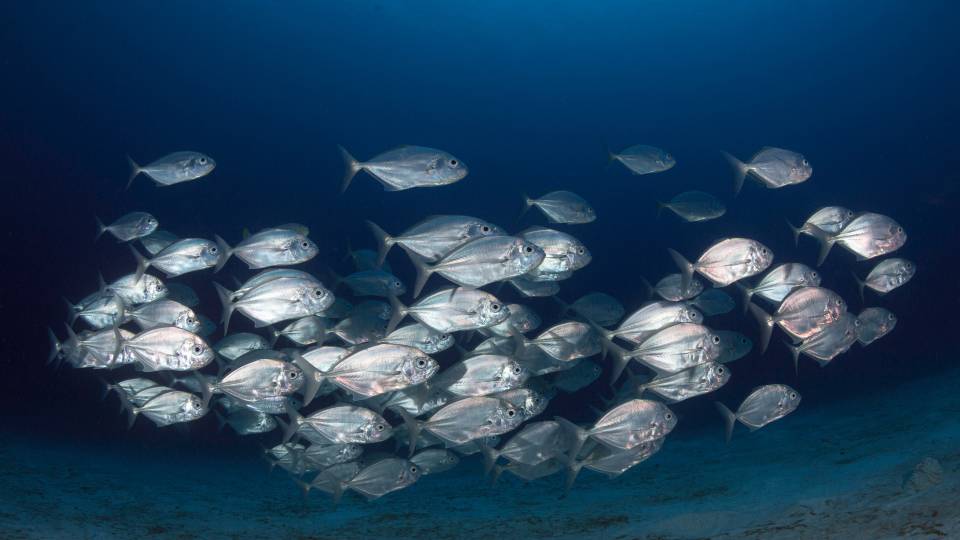A massive expansion of hydropower planned for the Mekong River Basin in Southeast Asia could have a catastrophic impact on the river's fishery and millions of people who depend on it, according to a new study by researchers including scientists from Princeton University.
The researchers analyzed a number of scenarios for dam construction along the river and its tributaries. In an article in The Proceedings of the National Academy of Sciences (PNAS,) they found that, in the most extreme cases, about a quarter of the migratory fish in the Lower Mekong Basin could be lost.
The researchers warned that ecological damage is not the only concern. The Mekong River Basin, home to 65 million people, is the world's largest inland fishery, with about two-thirds of the residents depending on subsistence fishing for their diet.
Guy Ziv, the paper's lead author and a former Princeton researcher, said the importance of the river as a food source makes the impact of development "a major food security concern."
The construction is being driven by the increasing power needs of the expanding economies of Southeast Asia. Dams constructed in Laos would provide power not only for that country, but also for Thailand and Vietnam, as currently planned.
The researchers recognized the importance of the power to the region, and that hydropower offers many advantages over other power sources such as fossil fuels. But they said governments in the region should carefully consider the tradeoffs before continuing with the dam projects.
"Large rivers of the world are fundamentally important ecosystems," said Ignacio Rodriguez-Iturbe, the James S. McDonnell Distinguished University Professor of Civil and Environmental Engineering at Princeton and one of the authors. "Frequently, the urgent need for hydropower generation leads to a neglect of crucially important considerations like biodiversity and fish resources when planning the construction of dams along the rivers."
The PNAS report offers an opportunity to consider these tradeoffs as well as a set of possible solutions that the researchers said would minimize the impact on the river's fish for different levels of energy production.
"We are not saying you should not build dams," Ziv said. "We are saying that you should build to minimize the impact."
Ziv is a research scientist at Stanford University who wrote the paper while working at Princeton. His coauthors are Simon Levin of the Department of Ecology and Evolutionary Biology at Princeton; Rodriguez-Iturbe of the School of Engineering and Applied Science at Princeton; Eric Baran of the WorldFish Center in Phnom Penh, Cambodia; and So Nam of the Cambodian Fisheries Administration. The research was supported by the James S. McDonnell Foundation, the AXA Research Fund, Mitsui-Bussan and the government of Japan.
The Mekong River runs through Southeast Asia from the Tibetan plateau to the South China Sea. Geographers usually divide the river into the Upper and Lower Mekong, with the lower division beginning at the Chinese border and running to the Mekong Delta in Vietnam. The Mekong is one of the world's most diverse fish habitats, and many of its fish are migratory, so they are particularly vulnerable to habitat disruption. The researchers identified 877 species of fish in the Lower Mekong Basin, including 103 migratory species, that would be affected by dam construction.
"The Mekong is one of the richest spots in the world," said Levin, the George M. Moffett Professor of Biology at Princeton. "It is a diversity hotspot."
Since 1995, development of the river has been overseen by the Mekong River Commission, an intergovernmental organization of some of the countries in the basin including Cambodia, Laos, Thailand and Vietnam. While the commission oversees construction of dams on the mainstream of the Mekong, member nations only have to provide notice before building dams on its tributaries.
The researchers analyzed a number of different scenarios. In particular, they studied current plans to build six dams on the Mekong and 27 dams on tributaries between 2015 and 2030. That construction would bring to 84 the total number of dams on those parts of the basin. Using mathematical models to estimate energy production and loss of fish, the researchers assessed the construction of the mainstream dams and those on the tributaries.
They concluded that the construction of the 27 tributary dams alone would result in the loss of about 20 percent of migratory fish biomass. Construction of six dams on the mainstream would result in a 7 percent loss of fish. But the researchers also concluded that the mainstream dams alone would produce nearly 50 percent more energy than the 27 tributary dams.
"I was surprised that the tributary dams would have more impact than the mainstream dams," Ziv said.
Many migratory species in the Mekong travel into the tributaries for shelter in the dry season or for spawning, he said. The dams on the tributaries — or lower down in the main river — block the fish's ability to travel. Although governments in other countries have protected fish in some rivers by building bypasses, called fish ladders, that alternative would be very difficult in the Mekong basin. Most fish ladders are built to accommodate one type of fish, such as trout or salmon, but the Mekong has such a wide variety of fish that it is not possible to build ladders to accommodate them all.
Ziv said that simply arguing that no dams should be built is not realistic, particularly in a region with poverty and high demand for energy.
"Hydropower is obviously very attractive as an energy source," Ziv said, adding that the purpose of the research was to allow leaders to make informed decisions with a realistic view of the projects' impacts.
Ziv said the researchers felt their report was a positive one overall. If the countries in the region can work together, they potentially could generate a large amount of energy without doing a tremendous amount of damage to the river, he said.
"You can reach a pretty large level of energy production without losing a lot of biomass," he said. "However, our results suggest that there are some dams that you can and should avoid."


